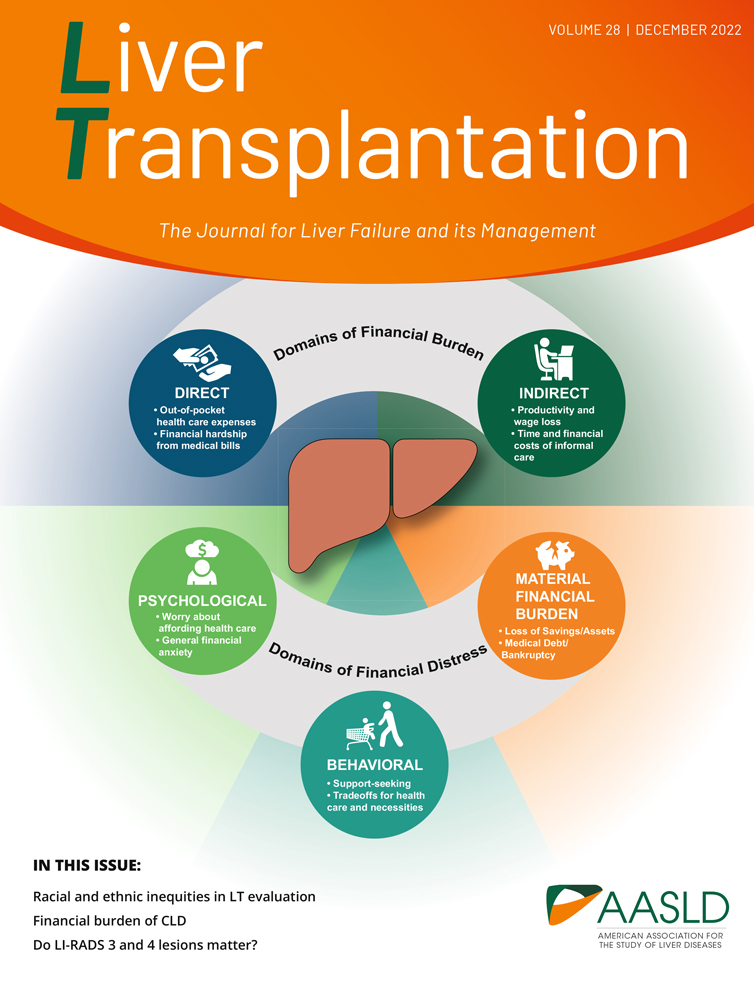Hepatitis after liver transplantation: The role of the known and unknown viruses
Abstract
This study was designed to determine the cause of posttransplantation hepatitis in patients undergoing transplantation for liver disease of nonviral cause; the role of acquired hepatitis B virus (HBV), hepatitis C virus (HCV), and hepatitis G virus (HGV) in posttransplantation hepatitis; and the course of posttransplantation hepatitis of unknown cause. Two hundred forty-three patients underwent transplantation for nonviral liver diseases (mean age, 48 years; 103 men, 140 women). Serological and virological assays for HBV and HCV were performed pretransplantation to exclude preexisting infection and posttransplantation to investigate the cause of posttransplantation hepatitis. Histology was graded on all available biopsy specimens; posttransplantation hepatitis was assessable in 150 patients. Posttransplantation hepatitis was present in 29% (44 of 150) of the patients after a median follow-up of 47 months (range, 1 to 101 months). Actuarial survival was significantly lower in patients with posttransplantation hepatitis compared with patients without (71%v 89% at 5-year follow-up; P = .03). HCV and HBV were identified posttransplantation in 14% and 9% of patients with hepatitis, respectively. After the exclusion of HCV and HBV infection, 22% (33 of 150) of the patients had posttransplantation hepatitis of unknown cause. HGV was present in 58% of these patients, but HGV was equally prevalent in patients without posttransplantation hepatitis. When patients with HBV and HCV were excluded, there was no difference in survival between patients with posttransplantation hepatitis compared with patients without (P = .08, log-rank test). Posttransplantation hepatitis was present in approximately 30% of the patients undergoing transplantation for nonviral diseases, with a median follow-up of 47 months. Known hepatitis viruses (HBV, HCV) were present in one fourth of the patients with posttransplantation hepatitis; 22% (33 of 150) of the patients had hepatitis of unknown cause, suggesting that other, as yet undiscovered, hepatitis viruses may exist.




